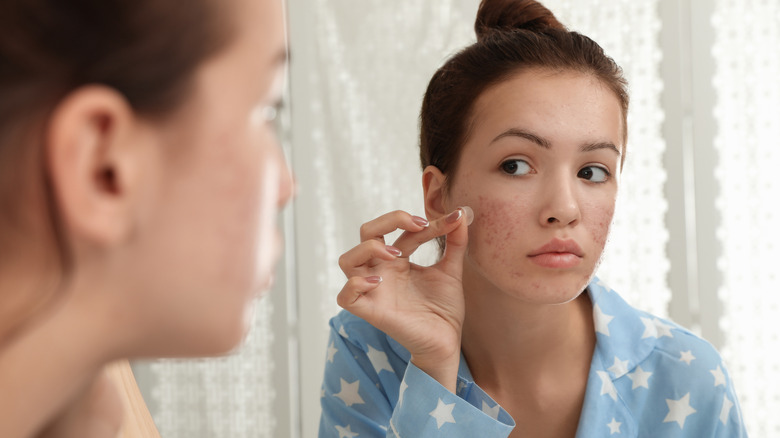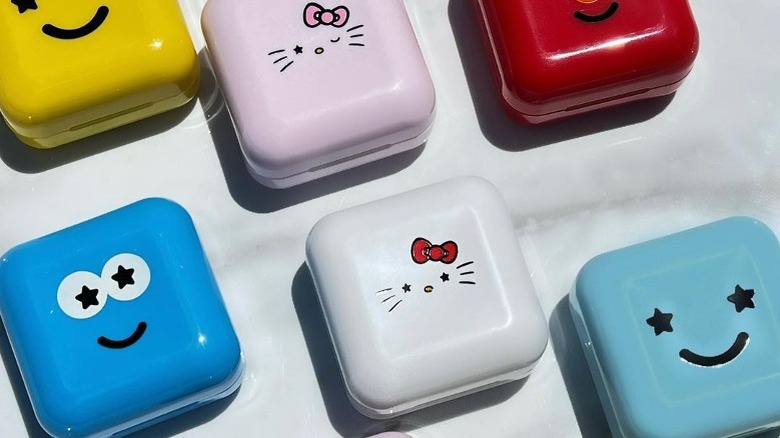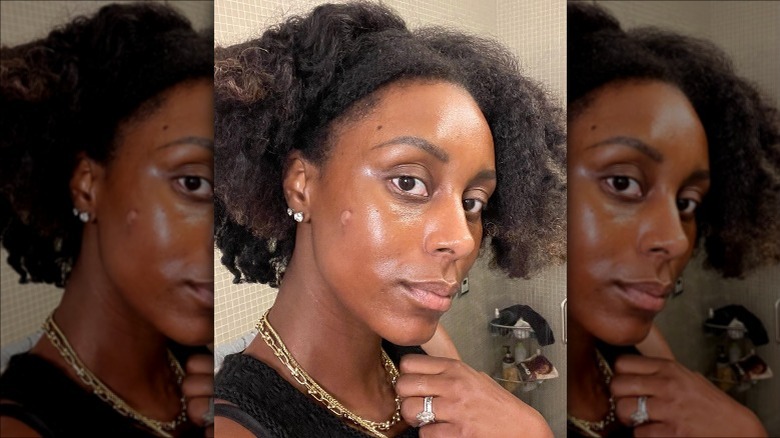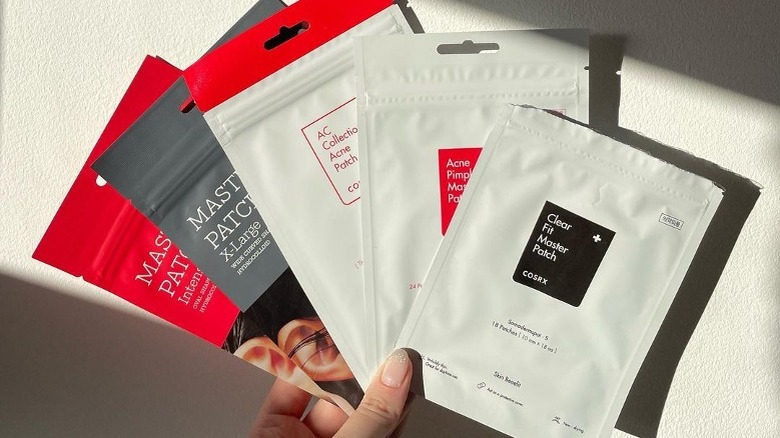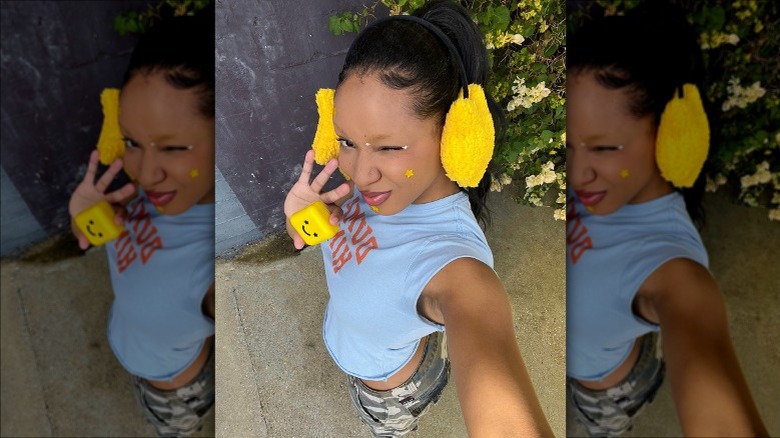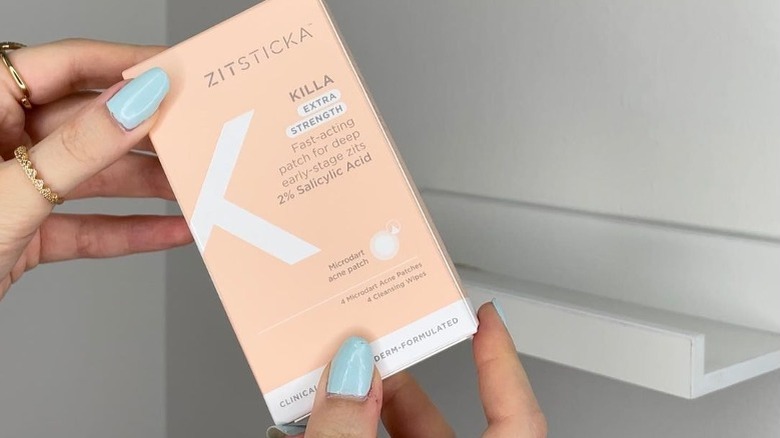5 Common Pimple Patch Formulas And The Type Of Acne To Use Them On
We've all been there. You've woken up on the day of a first date, job interview, or birthday party only to notice a giant spot threatening to ruin both your mood and your makeup. That's where pimple patches come in. Small, sort of cute, and the quick-fix savior to your pimple problem, pimple patches work by absorbing the fluid from your pimple and making it easier to manage.
Searches for these makeup bag must-haves were up 85% in 2023 from 2022. Clearly, there's demand for pimple patches, but in a world of so many to choose from, how do you know which ones to go for? From simple hydrocolloid patches to patches that contain ingredients like salicylic acid, hyaluronic acid, and niacinamide, not all pimple patches are suited to all pimples.
Whether you're looking for the pimple patches that will get rid of your blemishes fast or just something simple to stop you from picking incessantly at your skin, we've gathered all the info on the best types of pimple patches and which kinds of zits to use them for.
Hydrocolloid patches
First up is hydrocolloid pimple patches. Hydrocolloid patches work by absorbing all the gunk and excess oil from your spot (and they remove the impulse to squeeze it), leading to a sped-up pimple-healing process.
Per Byrdie, Dr. Reid Maclellan, founder of Cortina Health, hydrocolloid patches should be used when your zit has come to a head. "This type of pimple patch without other added ingredients is ideal for blemishes with a visible white head, as it will help to draw out that inflammatory excess pus and sebum and accelerate the healing process," Dr. Maclellan explained.
Basically, if you have one of those pimples that's practically begging to be popped (don't do it!), reach for a hydrocolloid patch instead. After a few hours, you should peel the patch off to see the pretty satisfying/gross head of your pimple on the patch. This is also the most popular type of pimple patch. If you have ever seen the Cosrx or Starface patches splashed across your Insta feed, they are both classic hydrocolloid patches.
Microdart patches include Salicylic Acid, Niacinamide, and Hyaluronic Acid
A step up from a classic hydrocolloid patch is a microdart patch with salicylic acid, niacinamide, and hyaluronic acid. You've probably heard of all of these ingredients separately, but when mixed they come together to create a sort of holy grail pimple patch. Salicylic acid will make its way to the depths of your pore to fight the spot, niacinamide will unclog your skin and create a smooth skin texture, and hyaluronic acid will help to balance out the harsher ingredients while simultaneously delivering moisture to your skin.
Some microdart patches dissolve by themselves, so they're a great option to put on when you're on a plane, running errands, or just chilling at home. Either way, the low-maintenance vibes of a microdart make them better for those not quite committed to a full skincare routine. Microdarts are also best for use on those pesky spots that never quite break the surface or the ones that you think will turn out to be a monster so you can stop the worst before it happens.
Hydrocolloid patches with Madecassoside, Tea Tree Oil, and Aloe
Imagine the healing power of hydrocolloid patches combined with the soothing power of madecassoside, tea tree oil, and aloe. Luckily, you don't have to just imagine it, as patches like Hanhoo's Soothing Blemish Patch feature a veritable cocktail of powerful pimple-fighting but skin-loving ingredients.
Madecassoside will soothe the inflamed skin around your pimple and help to reduce redness, a major plus when you've woken up with a larger-than-life spot. Tea tree oil is soothing in a different way and is naturally antibacterial. This will prevent your pimple from multiplying into several smaller pimples and also stop bacteria from the outside getting in. Tea tree oil is additionally thought to be an anti-inflammatory.
Finally, if you have ever put aloe on a sunburn, you'll know how soothing it is against your skin, so it makes sense that it would have a similar soothing effect on an inflamed pimple. Much like tea tree oil, aloe contains antioxidants and is antibacterial. Best of all, it can promote healing in wounds, so it could potentially speed up the lifespan of your pimple.
Hyaluronic Acid, Niacinamide, Licorice Root Extract, and Kojic Acid patches
Another potent combination, pimple patches containing hyaluronic acid, niacinamide, licorice root extract, and kojic acid will help to keep your skin looking fresh and clear even after your pimple is gone. You know by now that hyaluronic acid will keep your skin moisturized despite the dryness caused by the patch sucking the fluid out of your pimple, and we've covered that niacinamide will help your skin by keeping it smooth and clear.
However, licorice root extract and kojic acid are two ingredients you may not have heard of. Licorice root extract will have a soothing effect on the skin and reduce redness, which is why it's often used for skin conditions like eczema. Kojic acid is mainly used to treat hyperpigmentation and scars, both of which can occur if you get a particularly nasty or deep-set pimple.
When mixed together, these four ingredients will not only banish your pimple when it's visible, but help protect and clear your skin after it's gone too.
Hydrocolloid and Salicylic Acid patches
If you want to keep your pimple patches basic but with that little extra something, hydrocolloid and salicylic acid patches should be your new go-to. Speaking to Byrdie, board-certified dermatologist Dr. Jeannette Graf explained why these two ingredients are such a powerful combination. "Salicylic acid is a good ingredient to look for in pimple patches because of its antibacterial properties," Dr. Graf revealed. "Its ability as an oil-soluble acid to dive deep into the pores and break up sebum further aids the hydrocolloid in getting any unnecessary fluids out of the pimple."
As mentioned earlier, salicylic acid will also fight its way to the core of your pimple, so you're treating the problem at its base. Patches containing hydrocolloid and salicylic acid are ideal for those gunky, pus-filled spots so the salicylic acid can really do its job. Plus, as Dr. Graf stated, the antibacterial properties of salicylic acid will stop your fluid-filled pimple from getting infected and potentially growing larger or getting worse.
